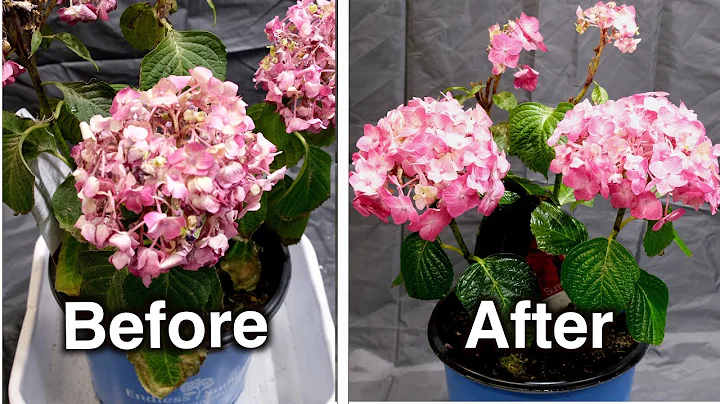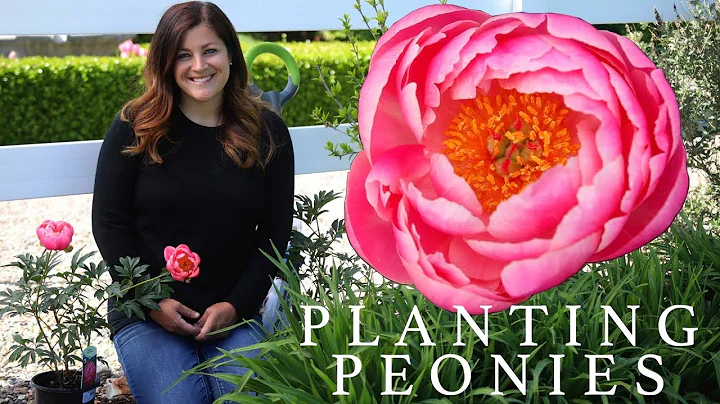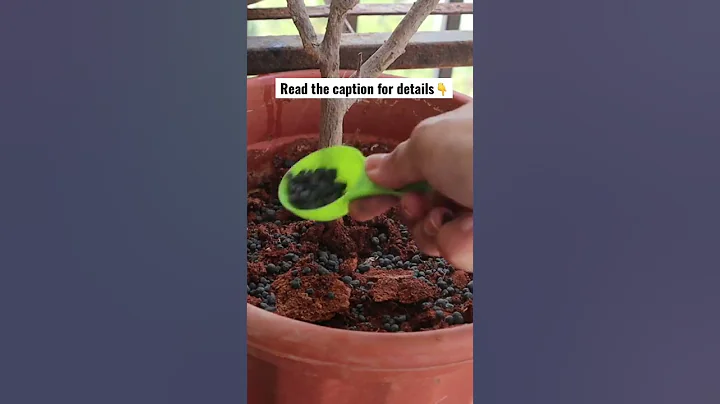A brief analysis of the "sixteen items" of Ming-style furniture
Welcome to follow the public account: Wangzhe Toys

Welcome to follow the public account: Wangzhe Toys


Welcome to follow the public account: Wangzhe Toys

Ming-style furniture
Sixteenth product
Concise, simple, honest, dignified and majestic, round, solemn, rich in Chinese elegance, beautiful, strong, soft and ethereal, exquisite, elegant, fresh

Wang Shixiang once described furniture products in "Research on Ming-style Furniture" The appraisal is divided into these sixteen "products", which is of great significance in guiding us to appreciate the shape and artistic value of Ming-style furniture.

『Concise』
This Arhat bed is also known as "sleeping alone" because it can only accommodate one person. The bed is surrounded by three single-piece plain boards, with only a narrow strip on the back. This is because it is difficult to obtain aniseed material that is wider than this. The bed has no girdle, large sides and smooth edges, and simple stitching. It is edged with a plain ice plate and only one edge is pressed. The legs are made of four thick round logs, which fall straight to the ground. They are wrapped with Luo Guo and short legs on all sides.
This bed adopts an extremely concise construction method from structure to decoration. Each component is explained cleanly and has clear functions. Therefore, it is not only reasonable in structure, but also beautiful in shape. It gives us visual satisfaction. and enjoyment, not monotonous, but with timeless interest.

Rosewood Single Board Surround Arhat Bed
Note: If the "big sides" of the four frames are rectangular, the two long tenons are the big sides. If it is a square, the two ends of the tenon are the big sides. If it is a circle, each leg of the outer frame can be called a large side.
『Simple』
This is a simple but extremely rare desk. It does not adopt the common form of the straight truss or the dwarf truss with a rectangular structure without a girdle. Instead, the luo pot truss is enlarged and raised to the position of the teeth, close to the tabletop, and the dwarf is omitted. This expands the movement space of the user's knees. Just because Luo Guoji has been raised, the connections between the legs and feet and other parts are concentrated at the upper end. This may not be stable enough, so I used and . One end of the Bawang tree is installed on the inside of the leg, using an ingeniously designed "hook pad mortise", that is, the tenon is inserted from the larger opening of the lower half of the mortise, pushed to the smaller opening of the upper half, and the lower half is padded with the tenon to make it It cannot fall, so it cannot come out. One end supports the tabletop.

Rosewood leg-wrapping bow pot and Bawangci black lacquered desk
It has the dual functions of transmitting weight and strengthening the legs. And because it is half hidden under the tabletop, it will not disturb people's sight and destroy the integrity of the image. The enlargement of the Luoguo tree and its close proximity to the sides make the desk look much more plain. The effect is different from that of the shorter Luoguo tree, which is made of thin material and has exposed holes. In addition, the center of the table is the original Ming Dynasty black lacquer surface, which is as polished and dark as ebony . The broken grains are mottled and the color is ancient. Matching the deep dark rosewood, it feels simple and honest, and it can be called a fine piece of Ming Dynasty furniture.
Note: The short posts of "Little Lao" are mostly used between the tree and its upper components; the long and straight teeth of " tooth bars " are tooth bars.
"Thick"
Xiangji uses a two-inch thick whole board as the surface, and the waist part is exposed to expose the upper part of the legs, which looks like a short column. Grooves are made on both sides of the short column, tape ring plates are embedded, and holes similar to the Begonia style are drilled. To use the terminology of the "Zeli" of the Qing Dynasty, it is the construction method of "breaking the pillars, tapering boards, and digging the fish door holes". The cheek support under the corset is wide and thick. Firstly, it is in proportion to the thickness of the panel and the angle along the ice tray, so as to form the shape of xumizuo; secondly, because the cheek support also needs to be grooved and embedded with the tape ring board, it cannot be used. Not thick.
The pendant teeth and the drum legs are intersected with raglan tenons to form the shoulders of the incense table. The material used here is particularly thick. The mud under the feet is also made of aniseed.Although there are holes in the ring plate to make it slightly transparent, beads are cut out at the ends, and some decorations are added, the main tone is still thick and simple. This type of incense table is rare and may not be a household appliance but a temple item. Today, it can be used as a reference when designing busts or pedestals for key exhibits.

Welcome to follow the public account: Wangzhe Toys
Iron Power High Waist Five-legged Fragrance Table
Note: "Tape ring board" is used in different parts of furniture. The boards with furniture components as the outer frame are generally carved; "raglan" "Tenon" is one of the two basic construction methods of case-shaped structures. The upper ends of the legs and feet have tenons and openings, forming two pieces, the front and back. A sloping shoulder is cut out of the front piece and inserted into the groove cut by the tooth bar to accommodate the sloping shoulder. The surface of the hind legs and feet should be flush with the teeth.
『Dignity』
This kind of armchair with a headband and armrests that are not prominent is also called " Nanguan Hat Chair" by Beijing craftsmen. The legs of the chair are tied outwards and the side angles are significant. The chair pan is wider in front and narrower in back, with a difference of almost 15 cm. The large side arc protrudes forward, and the flat surface is fan-shaped. The arc of the head protrudes backward, in the opposite direction to the big edge. The whole body is plain, with only a peony pattern embossed on the back panel. The pattern knife technique is similar to that of the early Ming Dynasty. There are "watang belly" teeth on the three sides under the chair tray, and plump "light grass lines" rise along the edges.

Rosewood Peony Pattern Armchair
The tube pins not only use open tenons, but also have a little protrusion, which is strong and not cumbersome, which is rare in Ming-style furniture. It should be an earlier technique, and it still retains traces of the protruding tenons of the large wooden beam frame. The dignity of this chair is related to its size, materials, patterns, moldings, etc. But its main factors are the stretched shelf structure and the stable spatial layout, in which the side corner ties play a considerable role. Some Qing Dynasty thrones are larger in size and made of thicker materials, but they cannot achieve the same solemn effect.
Note: "Chair tray" is the drawer tray of a chair, which generally has four borders. It is composed of soft or hard drawers in the middle; the middle part of the "Watangdu" tooth bar droops in an arc shape. Commonly seen in curled teeth on chairs; "Lamp Grass Line" full Yang line.
『Magnificent』
has a five-panel style enclosure, with three panels on the back and one armrest on each side. There is a fan in the middle of the back, with a scroll-shaped head on the top and bright legs with curly grass patterns on the bottom, about half a meter high. The height of the left and right fans decreases outward. They are made of thick wood and framed with double grooves and wrapped with panels on both sides. Then use "horse pins" to connect each fan together. The three middle leaves only have intarsia patterns on the front, and both sides of the armrests have intarsia patterns on the outside. The pattern is divided into four types. But they all evolved from the Ruyi cloud head pattern and were inlaid with nanmu galls, so they have their own consistency.

Huanghuali Five-screen throne inlaid with gall wood
The lower part of the throne is made of heavy wood with edges and legs, up to 10 cm wide, and is also inlaid with nanmu galls. The pattern is taken from bronze. The seat surface still retains the original diamond-shaped soft drawer woven with yellow velvet. It is dense and without holes. It has been protected by bedding for a long time and its color is still new. Overall, it is richly decorated and majestic, and the designer met the requirements of the rulers at that time who attempted to display their special status through the throne.
Note: A kind of "horse pin" is a type of tenon. The tenon is larger at the bottom and smaller at the top. It is inserted through the large opening of the mortise and pushed to the small opening. When the mortise and tenon are fastened, the component will be installed exactly in place. If the components are removed, they must still be returned to the entrance before they can be separated.
『round』
The seat pier is also called the drum pier, because it retains the shape of a drum; the belly has many round openings, which are also traces of the rattan coils used in the rattan pier. This pier is consecrated to be a square with rounded corners and a line along the edge. Between the consecration and the upper and lower circles of drum nails, there is a string pattern . The drum nails are hidden and there are no traces of chiseling. They were shoveled out using the "shoveling" method and then ground carefully. The four legs are wrapped and the shoulders are cut, and the shoulders are gridded at both ends. The upper and lower components are matched with raglan tenons, and they are as tight as a piece of wood, which shows the exquisite workmanship of the production.

Four-consecrated red sandalwood pouf
This pier was chosen as an example of roundness. Although it is related to its body shape, what is more important is its complete, smooth, mature and integrated style. No hesitation in cutting large and carefully selected materials, simple and angular moldings, exquisite carpentry craftsmanship, and even the natural luster of old furniture (bright patina) are all factors that enable it to form this style.
Note: "Shovel the ground" uses bare ground to make the relief pattern of the ground. The bare ground must be shoveled out with a shovel, hence the name.
『Shen Mu』
Not floating means sinking. Shen means deep and steady, which is the opposite of impetuous. Mu means beauty. Therefore, Shenmu is a kind of deep and quiet beauty. Among Ming-style furniture, those that can be concise, honest, thick, and solemn must also have the beauty of tranquility. The black lacquer kang table is used as an example of this product because it has a more solemn charm. This table is made of three single boards. The paste cloth is painted with gray paint to fade, and no carving or painting is used. There are holes on both sides of the feet, which are curved like tiles and can accommodate the palms of hands. A few panels are extra inches thick.

The black lacquered kang table
has a foot board two inches thick. The upper half shovel picks the inside of the board, and the lower half shovels the outside of the board until the sole of the foot is slightly turned outwards, showing a curling trend. The whole body of the lacquer is of good quality, dark in color, with ox hair pattern and fine sections. The interior is full of tranquility and elegance. Even the red sandalwood ware is not as elegant as it is, let alone huanghuali, chicken wing wood and so on. Judging from the style, it is not a common form of Ming-style furniture. It was a special design by a certain family in the early Qing Dynasty and then asked craftsmen to make it specially for them. The designer has a high level of aesthetics and has a deep appreciation for furniture modeling.
『Nonghua』
A fence and columns are installed on the bed. The upper ends of the columns support the top of the bed, and a lintel is installed on the top. It is called a "shelf bed", and a door cover is added to the front to make a moon hole style (or "moon door"). "Style"), and it is one of the more complicated canopy beds to make. This bed door cover is made of three leaves. Together with the surround and the horizontal lintel, the door is stacked to form four clusters of cloud patterns, which are connected by crosses. The pattern is very complicated. Due to its large area and the pattern consisting of the same group of patterns, what is striking is the regular and well-proportioned overall effect without any cumbersome feeling.

Huanghuali moon-hole style door cover frame bed
The bed has a high girdle, short columns between the girdle, segmented tapered ring panels, and embossed flower and bird patterns. The teeth are carved with grass dragon and tangled branches patterns. The lintels on the horizontal lintel are carved with cloud and crane patterns. It is a tall piece of Ming-style furniture that uses a combination of several carving techniques. It is luxurious and rich, giving it an aura of wealth.
『文绮』
Wenqi is the first product. Although the patterns are complex, they are more elegant and not as gorgeous as Nonghua. Here we take the Ganoderma lucidum desk as an example. Let’s first talk about the formal structure of the desk: the desktop is framed and plated, with a waistband and teeth. These are common manufacturing methods. However, the four legs bend outwards and then turn inwards, which is a type of bulging legs and pengya. There are horizontal bars connecting the feet. A cloud head composed of Ganoderma lucidum patterns is also turned out in the middle of the horizontal bar. The overall shape actually draws on the geometric structure with rolled feet.

Rosewood and Ganoderma lucidum pattern desk
This method of making is a variation among desks, and it is difficult to find identical examples. Except for the top of the desk, the Ganoderma lucidum pattern is carved all over the desk. The workmanship is round and the flowers are plump. They grow randomly, overlap each other, and do their best. They are like a wonderful mirror with the red sandalwood throne with lotus pattern hidden in the Forbidden City. Rosewood flower basket chair made in the late Qing Dynasty. Ganoderma lucidum patterns are also commonly used, with a diagonal knife and shovel, the cold front is exposed, and the convoluted engraving shape is vulgar. It can be seen that furniture decoration, the same subject matter, due to different expression methods, the beautiful and ugly ones are completely different.
『Yanxiu』
A rectangular table of similar size is called "joining table" or "half table" in Beijing. The upper part is shaped like a low table, and the lower part is connected with round legs, which is also a common method of making half tables. However, it is rare to see such successful modeling and carvings. The water line rises from the tabletop. The waist is tied to create a banana leaf edge, which rises and falls like water waves, with a flowing effect.The outline of the tooth bar is round and graceful. The front is carved with two phoenixes facing the sun and the clouds reflect it, just like a bright brocade. The side has folded branches of flowers and birds, which is like Wanli colored porcelain. Below the teeth are dragon-shaped angular teeth, which look very impressive when looking up.

Half table with huanghuali flower and bird pattern
Overlord Phi with Ganoderma lucidum pattern inside the foot. The momentum first lifted up, and then stretched out far away. This not only highlights the pattern on the stem, but also cleverly fills the exposed space in the corner teeth. This is round foot light element. The landing point is ended with a drum pier, and the upper and lower parts have a clear contrast. The overall materials are thinner, the proportions are well-proportioned, the lines are beautiful, the patterns are vivid, and it is light and graceful.
『Jingting』
"One leg and three teeth Luo Guo Xi" is a common form in the Ming style square table. The so-called "one leg and three teeth" means that any one of the four legs intersects with three teeth. The three teeth are two long tooth bars on both sides and a tooth head at the corner of the table. The so-called "Luo Guo Xi" refers to the Chinese wood stick placed under the long tooth bars. However, although this table belongs to this style, the four legs are upright and do not need to be turned sideways. The feet, in this case, the patterns and lines are also different from the common ones, and their style is also unique. The square table does not use much material.

Huanghuali one-legged three-teeth bow pot square table
There is not much spray on the tabletop, so the teeth installed on the corners of the table are thin and small. The leg stitching is not the common "melon edge" composed of mixed noodles or Yang lines. Instead, eight grooves were dug out with originality. What is immediately noticeable are the ridges between the grooves, which are sharp and powerful edges. From the ground to the table. The tooth strips are not wide, the strip lines are hollow, and the edges are clean and neat. What works on the Luoguo tree is the "sword spine" lines on the tree. The protruding effect of these ridges and the steep spirit they create make the square table look straight and strong.
『Rouwan』
This armchair is not small in size, but its components are very thin; its large bending arc is one of its characteristics. A slope is cut out in the middle of the head, slightly drooping to both sides, and then rising again at the end. The backrest board is high and thin. It tilts slightly forward from the lower end, then bends greatly backward, and then bends forward again at the upper end to connect with the backrest. If you look at the chair from the side, you can see the curve of the human body from the buttocks to the neck. The extension part of the rear legs above the chair pan is completely bent to follow the backrest board.
The armrests start from the intersection with the rear legs and gradually bend outward to increase the space of the seat. The outer ends are retracted inward and then outwards to facilitate sitting or standing. The federal stick first curves outwards, then inwards, and connects with the armrests, still intended to increase the seating space. The extension of the front legs above the chair pan is called the "goose neck", which first bends forward, then retracts back to connect with the armrest. There is no need for the main components below the chair plate to have curves, but the facing teeth are made of narrow materials and soft lines, which are still very harmonious with the upper part. The bending of Ming-style furniture components is mostly based on practicality, which is also its value.

Huanghuali four-year-old armchair
The above can also be said to be the general rules for making Ming-style armchairs. However, in order to obtain the curvature, it is rare to not hesitate to cut the large material and make it so thin. Because of this, the components can be made so soft and graceful, giving the hard huanghuali a sense of elasticity.
Note: The "Federal Stick" is a vertical member under the armrest of the armchair, between the goose neck and the hind legs. It is planted on the chair plate at the bottom and connected to the armrest at the top.
『Empty』
This is a backrest chair that is slightly wider than the lantern chair and is close to the "Monument of Unification" style. Straight up the head, the backrest board has a perfect circle and a begonia-style light-transmitting opening on the bottom, with sun lines along the light-transmitting edge. The middle is inlaid with a slightly raised rectangular piece of gall wood. Below the chair plate, "step by step" is used to catch the tree, and only the narrow tooth strips are applied under the foot tree. There is no need for the common method of making the four sides of the crotch or the Luo Guo with the short old ones. Instead, only eight angular teeth with three curves are installed. Because it is wider than the ordinary light hanging chair , there is a larger space between the rear legs and the backrest board.

Huanghuali Back Chair
This chair has a comfortable back. In order to give people a sense of stability, it is always better to make the lower half heavier, otherwise it will feel top-heavy. This is why corner teeth are generally not used. However, because the upper part of the chair is open, the light is bright and comfortable, and the lower part is very coordinated and well-proportioned.
『Linglong』
The interstitial screen is one of the Ming-style screens. The screen has upright pillars on two wooden pillars carved with drum shapes, and the front and rear of the upright pillars are clamped with standing teeth. Between the two pairs of piers, two horizontal beams and water-covered teeth are installed to connect them into a whole. Grooves are made on the inside of the column, and a single-leaf screen can be installed and detached. The screen base and frame are made of thick materials. If all the tapered ring boards are not carved with openwork, the screen will not look exquisite and clear.

Huanghuali plug-in seat screen
The chi pattern that was popular during the Ming and Qing Dynasties is a very interesting pattern. By utilizing the different twists at the tail, any space can be filled perfectly and appropriately. In a straight space, Chihu can be stacked arbitrarily like Arhats. In the space of the banner, add a patterned word "longevity" in the middle, and use chi and tiger on both sides to create symmetrical and vivid patterns. Since there are many conveniences in decorative composition, it is no wonder that Chi pattern became a handicraft at that time, especially Huanghuali furniture , which can be said to be one of the most commonly used pattern themes.
"Elegance"
The Ming style clothes hanger has a rack on the top and a column support on the bottom. The lower end of the column is implanted into a pier, and the supporting teeth are used to clamp it. The four pieces of wood in the middle of the clothes hanger form a flat square frame, and the horizontal beams are tenoned to connect with the column. This set of components is called "Middle Brand" by Beijing craftsmen. It occupies an important position in the clothes hanger. Two pairs of piers are connected by it. Clothes can be draped using it. It is also an important part for adding carvings. Carved clothes hangers usually have two short columns erected in the middle-brand flat square frame, and three openwork tapestry rings embedded in them.

The middle brand part of the Huanghuali clothes hanger fragment
This middle brand uses the dou technique to create a very beautiful and moving pattern. The pattern is that each group of four cloud patterns is separated by a group of flowers. The middle layer of patterns is complete, and the upper and lower layers use half of it. Generally, four clusters of cloud patterns are made of four moiré bucket clusters, and then fixed with tenons. The four clusters of cloud patterns and flowers of this brand are carved out of a large piece of wood. The slender phoenix eyes are rolled and twisted. The high crown, the sharp Yangwen ridge line, and the "ice pattern" carved with double knives on both sides are completely changed from the dragon and phoenix patterns on the ancient jade rings and bis. It avoids the traditional patterns of Ming-style furniture, so it looks novel and eye-catching, and because it is rooted in a longer artistic tradition and is good at absorbing and applying it, it can be beautiful and moving.
"Fresh"
Hexagonal chair is extremely rare in Ming-style furniture. The reason why there are so few is not only because it consumes labor and materials, but also because it tends to look dull and difficult to make beautiful and durable. This hexagonal chair is actually larger than an ordinary armchair and uses relatively complex moldings. It cannot but be said to be a bold innovation. It is not difficult to be bold and innovative, but the difficulty lies in making the six-square chair so successful.

Welcome to follow the public account: Wangzhe Toys
Huanghuali Hexagonal Armchair
The chair plate below has a hexagonal structure, but the hexagon is not equilateral, but has two long sides at the front and rear, and short other four sides. In this way, the back is naturally wider and the seating area is naturally larger. It is suitable for sitting with the legs hanging down or sitting cross-legged. It is both beautiful and practical. Below the chair plate, only the front side is provided with teeth, and the other five sides are all made of teeth. The outside of the six legs is curved, and the other three sides are flat. The edge of the chair pan is made of double-mixed surface pressed edge line and the legs are made of split material. Above the chair plate, the tops, armrests, goose necks, federal sticks, etc. are all made of melon ribs, and the whole body is made of split-ribbed moldings, which plays a certain role in the complete harmony of the upper and lower parts and in order to eliminate dullness.


Welcome to follow the public account: King of Toys
Welcome to follow the public account: King of Toys
King of Toys: Ancient Pearl and Jade Cultural and Art Exchange
(The pictures of the article are from the Internet, the pictures and texts are for learning and sharing, please indicate the source copyright when reprinting All rights reserved to the original author) Sharing is the best encouragement. Find someone who loves antiques to be your friend!
may be by your side. "Although the beauty of jade is in the stone, it is no different from rubble if it is not worthy of careful workmanship." Great works of art do not have to follow the trend, they can lead the trend.
Among all the ancient treasures left in nature, only ancient jade has a soul. The real ancient jade will have an ever-changing charm among those who recognize it. If you can recognize the real ancient jade , and connected with its soul. In your play and contact, ancient jade will show its most beautiful side, showing a moment that no other ancient object can replace it, so good ancient jade has life. Yes, every enthusiast who collects ancient jades is a discoverer and inheritor of life, and a cultural person doing the greatest merit.
Warm note: We respect and thank the original author. If there are any copyright issues, please inform the original author or peers, and we will correct and delete them in a timely manner. If similar WeChat public accounts reprint articles published by this department, please indicate the source. Thank you for your cooperation!





















